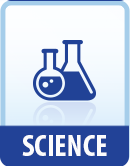|
This section contains 374 words (approx. 2 pages at 300 words per page) |
Radioimmunoassay is an extremely sensitive method of measuring very small amounts of a substance in the blood. The isotopic method was developed in 1959 by the Americans, biophysicist Rosalyn Yalow and physician Solomon A. Berson (1918-1972) at the Bronx (New York) Veterans Administration Hospital.
Yalow had established the hospital's radioisotope laboratory in 1947. In 1950, she was joined by Berson, a resident in internal medicine who became interested in her work. Berson was born in New York City in 1918, and received his B.S. in 1938 from the City University of New York and his M.D. in 1945 from New York University.
Yalow and Berson developed their first radioisotopic technique to study blood volume and iodine metabolism, then adapted the method to study hormones. Working with very pure insulin, they became the first to discover that small molecules can induce production of antibodies. They were also able to show that, contrary to theory, Type II (adult onset) diabetes is caused by inefficient use of insulin, not by lack of it in the body.
In 1959 they perfected their method, naming it radioimmunoassay (RIA). Its extreme sensitivity--it measures one thousand billionths of a gram of material per milliliter of blood--quickly made it a standard laboratory tool. To measure insulin, the first step is mixing known amounts of radioisotope-tagged insulin and antibodies. These combine chemically. Next, a small amount of the patient's blood is added; the insulin it contains displaces some of the tagged insulin. The free tagged insulin is then measured with isotope detectors and the patient's insulin level is calculated.
RIA has been used for measuring peptide and steroid hormones, as well as other substances such as morphine, viruses, vitamins, cyclic adenosine monophosphate (cAMP), and messenger RNA (ribonucleic acid). It has been applied to narcotics detection, blood bank screening for hepatitis virus, early cancer detection, measurement of growth hormone levels in shorter-than-normal children, tracking of leukemia virus, diagnosis and treatment of peptic ulcers, and research with brain chemicals called neurotransmitters.
In 1968 Berson became chair of the Department of Medicine, Mt. Sinai School of Medicine, still continuing to work with Yalow. His death in 1972 made him ineligible to share the portion of the Nobel Prize in physiology or medicine that Yalow received in 1977 for their work.
|
This section contains 374 words (approx. 2 pages at 300 words per page) |


